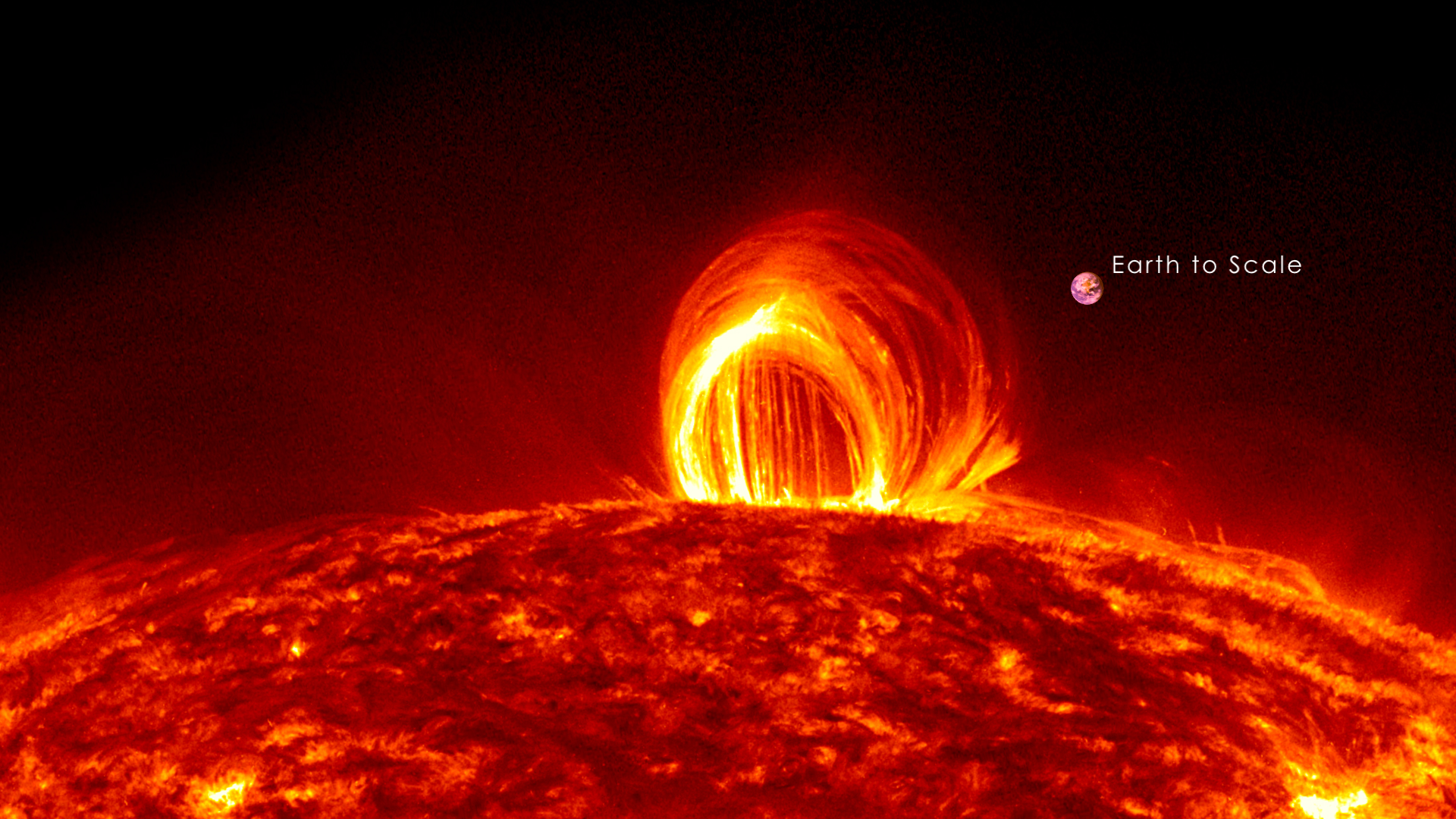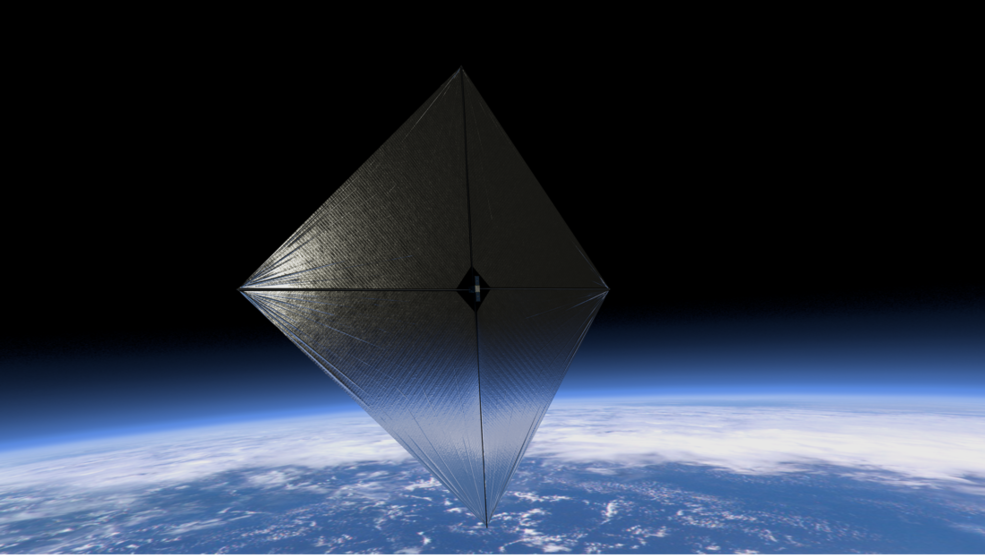Introduction to Radiation

Key Points
- There are several types of radiation and they can cause different effects.
- Radiation can affect materials like lenses, windows, and insulation by darkening them, making them brittle, and/or changing their electric properties. It can also interrupt and damage electronics by changing charge distributions. And it can inflate the atmosphere, creating drag that pulls spacecraft to lower orbits.
- Radiation shielding is heavy and not everything can be shielded (like optic lenses), so designers try to shield the most important things and accept risk for everything else.
Introduction
Relatively few people understand the types, impacts, and mitigation approaches for radiation. Some radiation experts will even tell you they don’t fully understand all the intricacies themselves. There are different energies, different timespans, different assemblies, different locations, and more to consider. For reasons like these, most radiation analyses provide probabilities of things going bad and experts work to make the probability curves as narrow and favorable as they can.
Types of Radiation
Radiation engineers deal with three broad categories of radiation: Galactic Cosmic Rays (GCR), Solar Particle Events (SPE), and Trapped Radiation. You will also hear about Secondary Events (SE), which are a result of high-energy particles colliding with material and creating lots of smaller high-energy particles.
Galactic Cosmic Rays
The universe is filled with high-energy radiation from things like supernovas. These photons and atoms can wreck the hardware they collide with. The Sun does a pretty good job, though, of shielding the solar system from most of the worst the universe can do, especially for the inner planets closest to the Sun’s own streaming particles and magnetic field.
However, because the sun has cycles where it goes from strong activity to low activity and back again every eleven years, the number of galactic particles that make it to Earth goes up and down. Specifically, when the sun’s activity is at its peak, the Earth sees fewer galactic particles and when the sun’s activity is at its minimum the Earth sees higher numbers of galactic particles. Engineers take the phase of the sun’s cycle into account when calculating the probabilities of radiation damage.
Solar Particle Events

The sun is the most consistent source of radiation, albeit not typically with the same energy as galactic cosmic rays. But they make up for the lower energy with quantity: they can overwhelm systems through high quantity, which increases your probability of something bad happening.
Solar Flares and Coronal Mass Ejections (CME) are two ways the sun bombards spacecraft. A Solar Flare is a burst of high-energy photons. The photons reach Earth just eight minutes after being released and can come without warning. Coronal Mass Ejections, though, are bursts of the sun’s actual material. It’s exploding part of itself into the solar system. These clouds of material can take a few days to reach us and some people specialize in forecasting their arrival.
Because of the extreme number of particles, they tend to do damage by energizing things instead of single shots of destruction (although that can happen). The energization does things like building up a charge that shorts electronics, causes arcing within lubricants, and disrupts communications. They can also inflate the atmosphere, creating significantly more drag. SpaceX had a failure in early 2022 with dozens of their satellites that unluckily launched into a solar storm. They didn’t have enough fuel to fight the increased drag and they fell out of the sky.
Trapped Particles
The Earth’s magnetic field captures and traps electrons and simple atoms. Of all the particles that stream towards Earth, only the ones with the right energy levels and the right angle of approach are captured. When they’re trapped, though, they bounce back and forth between the poles at high speeds until they collide with something like the atmosphere (which is how we get the auroras).
The altitude they bounce back and forth at depends on factors like their mass and energy level, but there are “sweet spots” that most particles fall in and stay trapped at. These altitudes and locations make up what is called the Van Allen Belts. Mission designers try very hard to avoid the belts. If they have to fly through them, they try to get through as quickly as possible.
There is a region on the Earth called the “South Atlantic Anomaly” where part of the Van Allen Belts collides with the atmosphere off the east coast of South America. It’s kind of like pointing a fire hose of radiation at the Earth and it’s been the source of many satellite failures over the years. On the International Space Station, astronauts sometimes take shelter or other precautions when they fly through the region.
Secondary Radiation
When radiation collides with things, debris can scatter just like in any other collision. Secondary Radiation is the technical name for the debris and it can be worse than getting hit by the first particle.
For instance, imagine a very, very heavy ball falling on your roof. The new hole in your roof would be bad. Even worse would be splitting the ball into a bunch of very heavy balls and dropping them on the roof. Each hole would be smaller, but you’d have a bunch of them in a bigger area. You’d rather not have any damage, but if you had to choose, you’d probably take the single hole instead of many holes. After all, maybe the single ball punches through the roof without breaking your computer, but one of the many smaller balls would.
This is why a lot of spacecraft don’t use radiation shielding. Unless you can completely stop the radiation and all the secondary radiation, it’s better to take your chances. As a point of reference, if you used water as your radiation shield, you’d need roughly a meter thick shield weighing 1,000 kg per square meter of area.
Damage Types
There are lots of ways radiation can break things. They tend to fall into two categories, though: a single event smashing things and lots of particles eroding things over time.
Single Event Effect
A single event can be a high-energy proton zipping through. It can also be a tight grouping of particles that do damage in a short time, such as what a solar flare might spit out. Operators suspect they’ve been hit when things suddenly stop working. For instance, the computer resets, a pixel goes out, or a component stops working permanently. They don’t see a degradation over time, they see an instant change in behavior.
Total Ionising Dose
Spacecraft can last years in orbit while being constantly bombarded by radiation. Over time, like most things on Earth, the bits of damage stack up until something finally degrades and breaks. Engineers and scientists measure this process as the “Total Ionising Dose”. Often, optics, electronic boards, and components are rated and tested to survive some minimum dose. Then engineers figure out what the dose rate of your orbit, design, and other parameters lead to. This tells you roughly how long you can expect to operate before radiation breaks something. When engineers design radiation mitigation, they’re most often looking to minimize the dose rate, not survive a catastrophic single event collision.
Solar Pressure

Radiation can stream into spacecraft over time to create a tiny force across the surface. A 1-meter square panel floating around the inner solar system can only feel a maximum of about 10 micro-Newtons every second (a tiny fraction of the weight of an eyelash), but it does it constantly. Eventually, a spacecraft can be accelerated or slowed down by it. In fact, the Kepler spacecraft used solar pressure to help stabilize itself when one of its reaction wheels failed.
Most of the time, though, low-earth spacecraft don’t worry too much about it since they fly into and away from the pressure every time they orbit so it (mostly) balances out. Plus, other forces like atmospheric drag are more concerning. It’s when you get out to medium and geosynchronous (and further trajectories) that it becomes an area of focus.
Modeling the Radiation Environment
Three models work together to help you map your radiation environment around Earth. Together, they are called IRENE, which is short for International Radiation Environment Near Earth. The three models are the AP-9, AE-9, and the SPM. AP and AE are for the Proton and Electron models, respectively, where the “A” is just a military designation meaning these models are for the space environment. The numbers mean this is the ninth version. SPM stands for Space Plasma.
The IRENE set of models is updated every few years by the Air Force Research Laboratory with the help of commercial and international organizations. Links to the models are in the Curated Links section below.
Summary
People can spend their whole careers learning interesting things about radiation and its effects on spacecraft. And there are the scientific aspects, too, since radiation is how we study distant stars and other bodies. For spacecraft engineers, radiation is usually a “bad thing” that breaks hardware and ends missions, either directly or indirectly. Taking the time to understand some of the intricacies is a good way to improve your value to a team.
Curated Videos
- https://www.youtube.com/watch?v=ofWQIW-69bQ&t=600s
The video covers the source of radiation and the units used in good detail before talking about the effects of radiation on humans. The channel only has a few videos (unfortunately) and they’re all worth checking out. - https://www.youtube.com/watch?v=9Uc1VXL3Q7g
Curious Droid also covers the sources of the various types of radiation. The video then dives deep into how electronics and space hardware can be destroyed. Well worth a watch for the overview. - https://www.youtube.com/watch?v=w-nfF7bK34Y
South Atlantic Anomaly… - https://www.youtube.com/watch?v=MzJXbHV7zJU
The Open Source Satellite project hosted a web stream about radiation and its effect on spacecraft components. This is more focused on engineering so you’ll get practical information you can use. They also include nifty insight about radiation on earth when flying airplanes. - https://training.ti.com/total-ionizing-dose-tid-basics
Texas Instruments put together a series on radiation in space for electronic components. It’s a good overview that dives in deep enough to help you understand the next steps.
Curated Links
- https://www.vdl.afrl.af.mil/programs/ae9ap9/index.php
This is the home page of the IRENE models. It has various links to overviews and you can download the tools. - https://www.spenvis.oma.be/intro.php
SPENVIS is short for SPace ENVironment Information System. It’s a free web app hosted by the European Space Agency. All you have to do to get access is register. - https://oltaris.nasa.gov/
NASA’s free online model tool is called OLTARIS, which is short for “On-Line Tool for the Assessment of Radiation in Space”. NASA includes the AP-9 and AE-9 trapped particle models and then lets you test various shielding and radiation absorption approaches. The tool is free with a registered account. - https://www.nasa.gov/sites/default/files/atoms/files/space_radiation_ebook.pdf
NASA hosts a radiation PDF that covers the basics in a question/answer format. It could be handy for anyone wanting to present slides to a class. - https://en.wikipedia.org/wiki/Cosmic_ray
Wikipedia has a great entry on galactic cosmic rays. - https://www.nasa.gov/content/goddard/the-difference-between-flares-and-cmes
Good article and great video provided by NASA, covering what the difference is between solar flares and coronal mass ejections. The clips they show are “super awesome” if you’re a space nerd.
 Space Steps
Space Steps